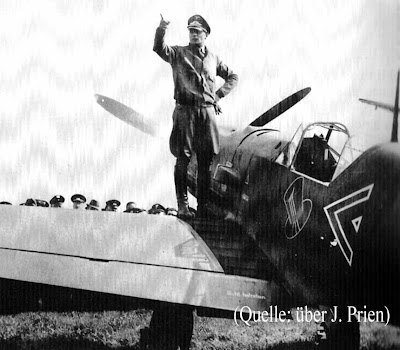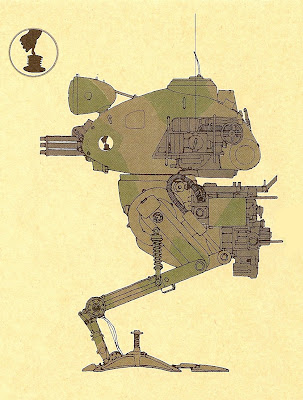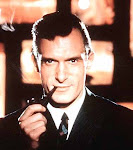Below a Krote featuring the insignia of the 367th Assault Recce Company - a 'Zylinder Hut' or 'Top Hat' on a white disk.

"One of the devices employed by the 367th Assault Reconnaissance Company, which despite being the company to have been issued with the fewest, had the most combat success with the Krote. Each of the 4 Krotes in the company could easily defeat any of the three enemy units in service at the time, the AFS MKI, MKII or J-40."
While this particular Top hat motif was the staffel insignia of 2./JG 77, zylinder hut emblems had been popular with the luftwaffe since the Spanish Civil War originating with the Condor Legion fighter wing J/88. Possibly chosen as a symbol of the elite officer class, the top hat was ironically to become associated with the enemy.

This He 51 is one of the batch received by the Condor Legion in October 1936 and wears the first badge of 4.J/88, the Zylinder Hut (Top Hat), that would later be adopted by 2.J/88.
"The emblem that was painted on the first Messerschmitt was the one that had already been used by 2.J/88 on the very old Heinkel, that is to say, the 'Zylinder Hut'. The first major military action of 2.J/88 'Zylinder Hut' (Hat of Glass), with the emblem painted on the backs of its new mount, the Messerschmitt Bf-109B- 1, took place during the course of the Battle of Brunete in July 1937. The base chosen to welcome in 2.J/88 of the Condor legion was Avila, its mission to escort and to protect the Junkers Ju-52/3m bombers, but the inevitable cruelty and ferocity shown by both sides during 'hunting' became immediately apparent. However, from the 8th of July the National Side had dominion of the skies due to the action of the Legion Condor and in particular to the Messerschmitt of the 'Zylinder Hut'."

The Zylinderhut was adopted as a personal insignia by a number of pilots who had seen service with the Condor Legion in Spain. Major Handrick who had been Kommandeur of Jagdgruppe 88 continued to use the top hat emblem when he took command of JG 26. Another JG 26 pilot to display this emblem was Hptm Herwig Knüppel.
"The Legion Condor 'Zylinder Hut' given to its popularity between the German pilots was present on a multitude of fuselages of the Germanic airplanes during World War II. Lt. Hubert Kroeck of the Jagdgeswader 53 'Pik Ace' used the 'Zylinder Hut' of 2.J/88 as a personal emblem. Curiously the 'Hat of Glass' that was painted on the fuselage of his Messerschmitt was white and not black as was typical in 2.J/88 of the Legion Condor. Like Kroeck, another member of 2.J/88 'Zylinder Hut', Oblt. Herbert Ihlefeld also used the 'Hat of Glass' as a personal emblem, at least during the course of Battle of England in which he was Gruppenkomandeur of I. (j) LG 2. Oblt. Herbert Ihlefeld survived World War II and reached a total of 132 victories. Oblt. Reinhard Seiler, “Ace” in Spain and member of 2.J/88 'Zylinder Hut', also used the 'Hat of Glass' as his personal insignia during World War II. Oblt. Seiler served with Jagdgeswader 54 'Grünherz' fighting on the Russian Front and survived the end of war with 109 victories. Finally, another veteran of the Legion Condor in Spain, the Fw. Alfred Held, who flew with 4.J/88 'Pik Ace', also used the 'Hat of Glass' like a personal emblem, adorned by a legend that said “Kolle alaaf”. By the 4th of September 1940 Alfred Held had the singular honor of being the first Luftwaffe commander to have destroyed an airplane of the R.A.F."












